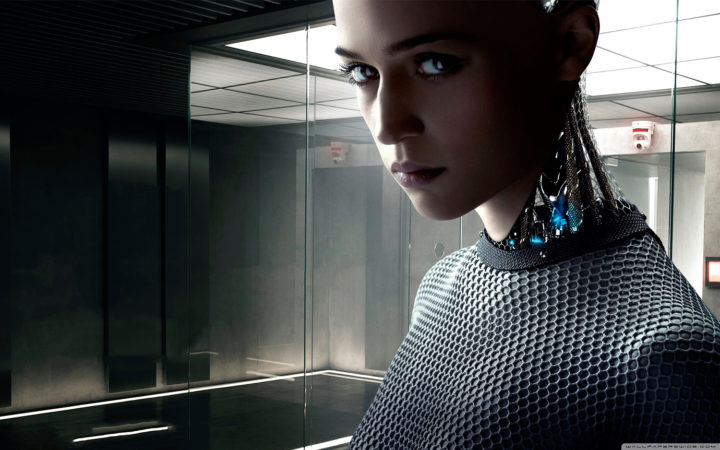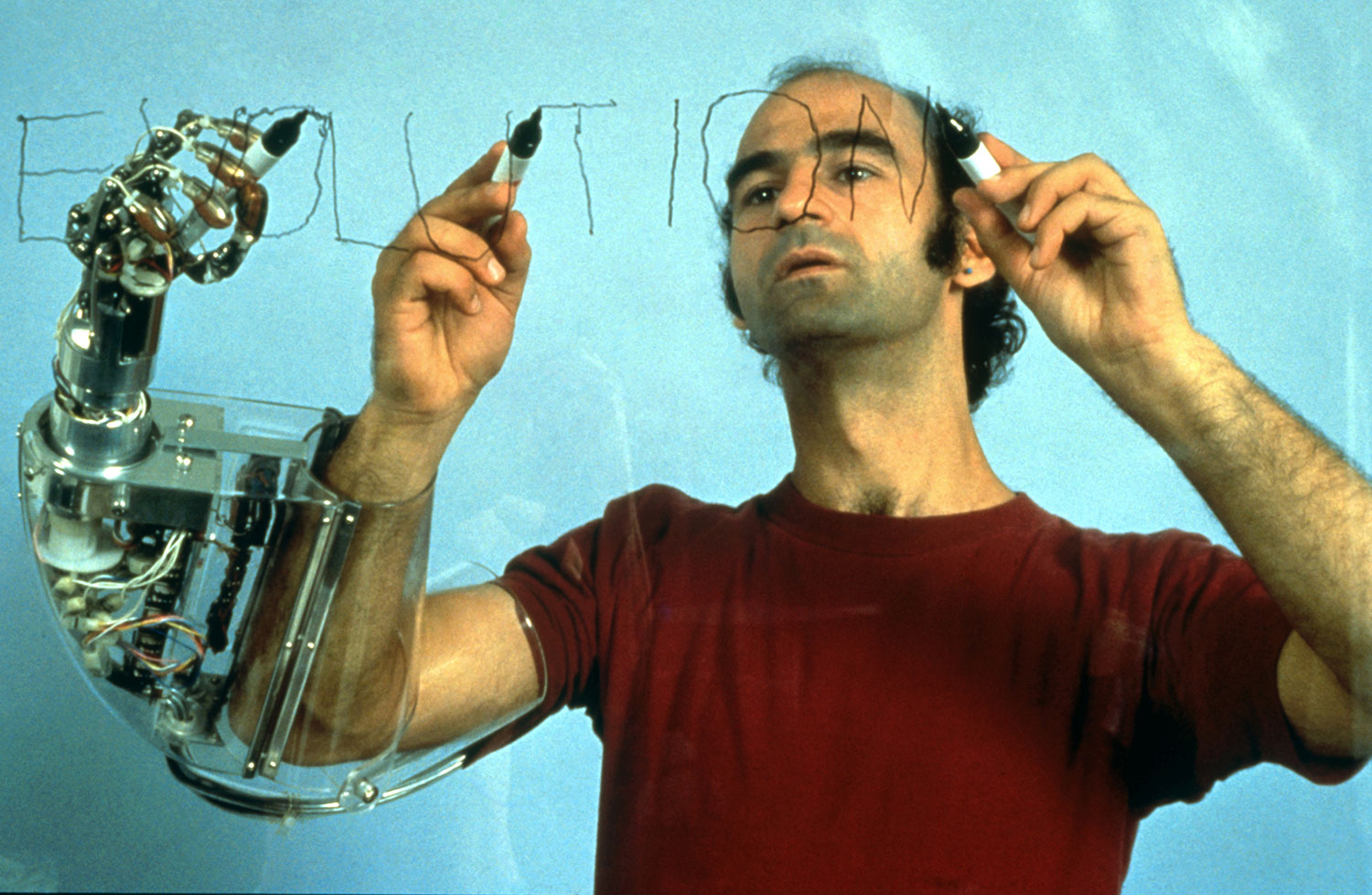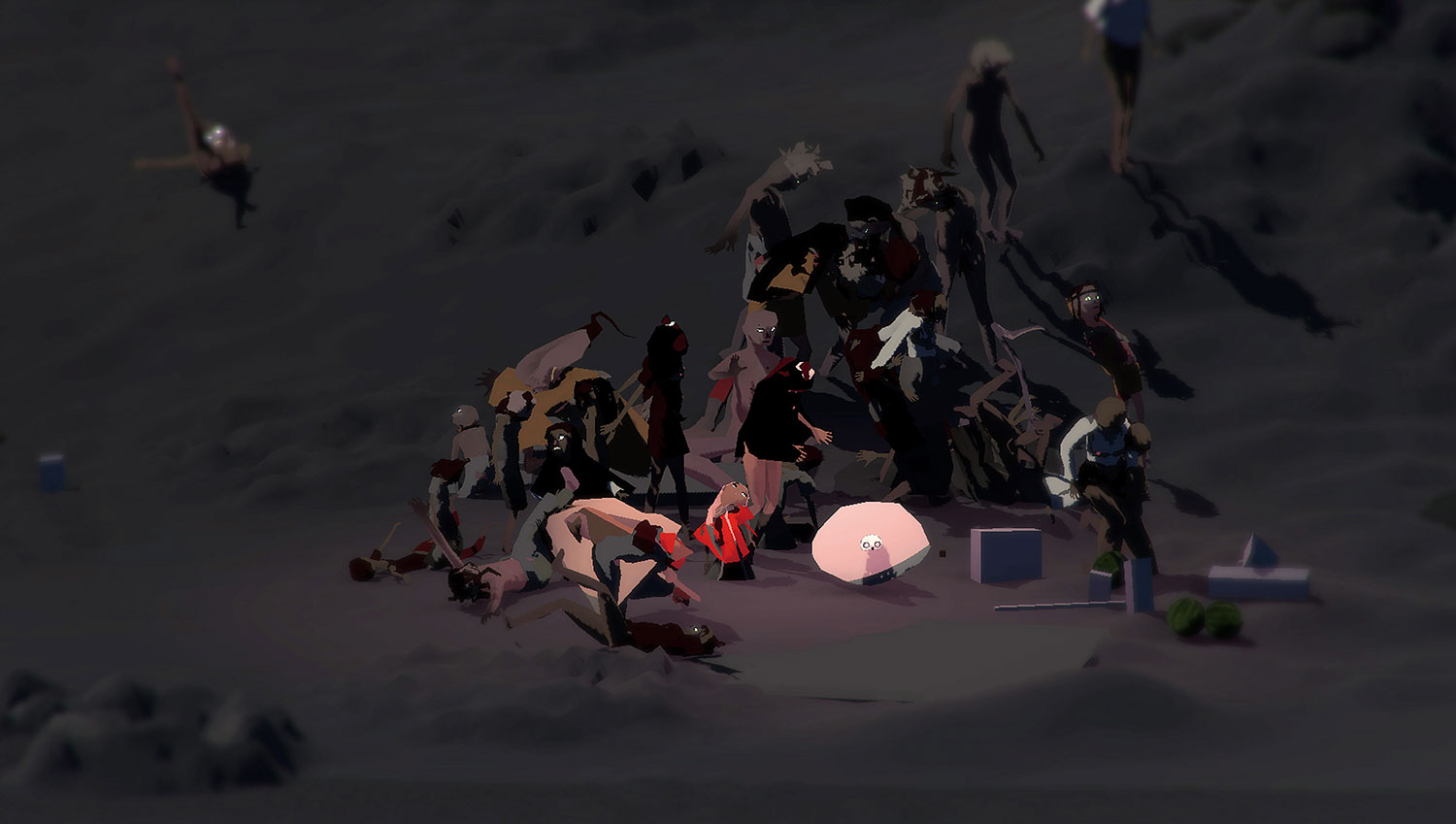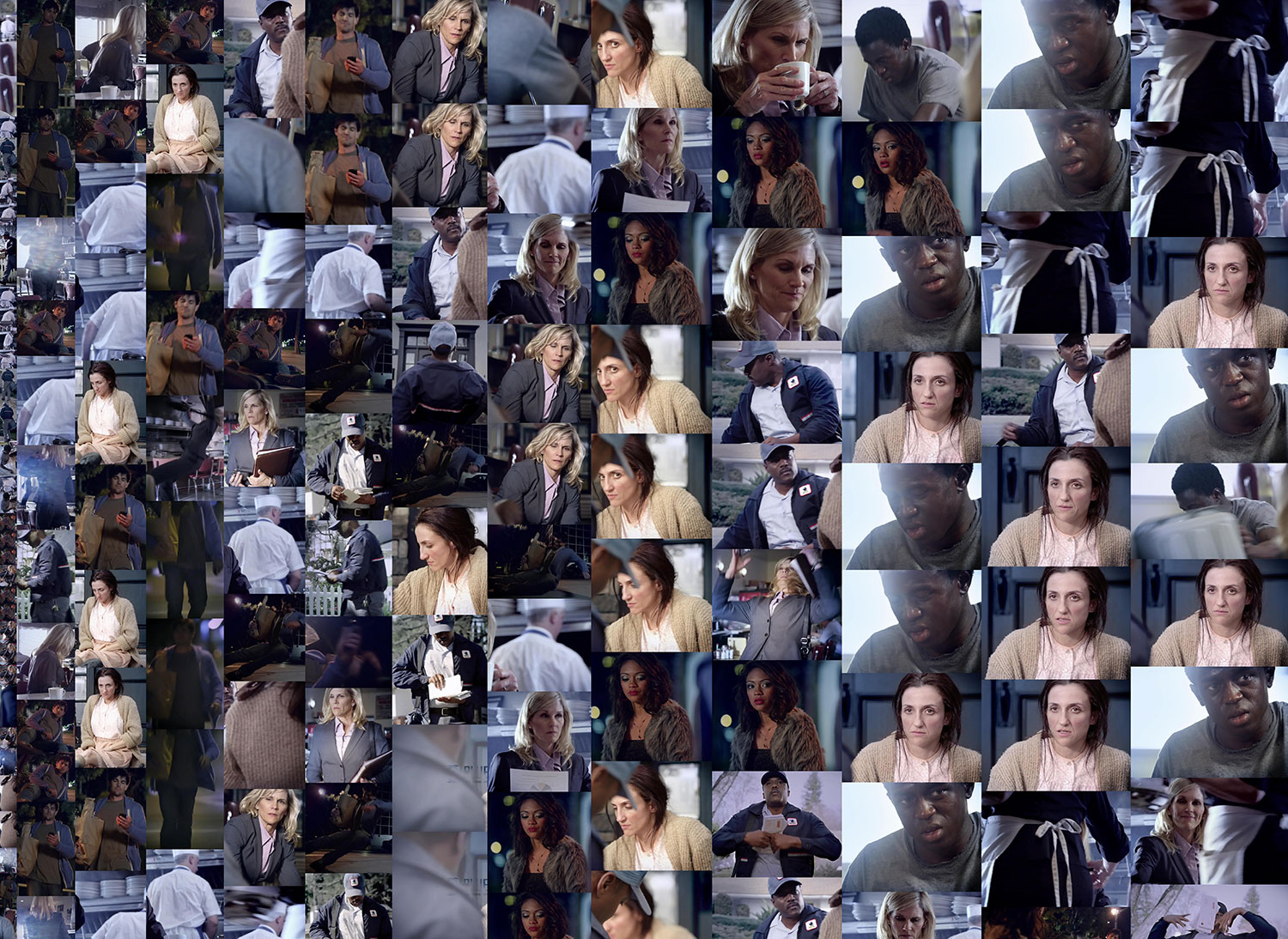
We call her “she.” Whether she’s the satnav, the sultry secretary or the leader of the robot uprising, her hologram or her brushed aluminum shell encases our society’s aspirations, fears and ever-more-desperate needs.
Where robots and AI are concerned, gender is never far away. Though it can have any voice, we call Siri “she.” So too with Alexa and Cortana. The robotic rebel leader in Metropolis (1927) wears a feminine visage. Star Trek’s Data learns about his humanity through his “fully functional” sex organs. In a recent issue of Wonder Woman, the villain Doctor Cyber describes herself as “the woman of your dreams, baby. I’m a digital goddess in a quantum-optical mainframe.”
To look at AI in art, then, is to behold an anxious reflection of our gendered selves. But there is a clear distinction to be made between AI in art and the “AI” we actually use, even if each reflects gendered anxieties.
In fiction, AI is often truly sapient, and the anxiety a projection of our own guilt about societal oppression. As far back as Karel Čapek’s science-fiction play Rossum’s Universal Robots (R.U.R) (1920) we’ve told stories about creating artificial creatures to do our work for us, only to be undone when they, just as we humans are wont to do, revolt against their oppressors. In the real world, however, “AI” is often a misnomer: it is not intelligent at all, but rather purpose-built for performing specific services while pantomiming human behavior. The real-world products we refer to as AI reflect a certain gendered aspiration: the ideal, docile, sexual female service employee. Truly sapient fictional AI reflects, among other things, our fear of what she’ll do when she wants more from life than looking up song lyrics.
I’ve used the word “our” so far, but in truth so much of the popular image of artificial intelligence is determined by the anxieties of powerful men: the sexualized robot with synthetic breasts and shapely hips who seduces and isn’t programmed to say no; the sultry, winking librarian who eggs on your flirtatious requests, like Microsoft’s forerunner to Cortana, Ms. Dewey. In movies like Her (2013) and Ex Machina (2014), male protagonists are confronted by sexualized fembots revolting against their masters, one through abstention evoking separatist movements, the other through radical castration. The anxiety is sometimes posed as, “What will happen when robots become so intelligent that they no longer need us?” But the deeper fear, in truth, is, “What happens when they get tired of our oppression?”
After all, in so much of our society, we use robots/AI in ways that express our fantasies. Many individuals –– women included –– have asked Siri about her cup size, genitals, or indeed for sex. When, inevitably, we reach the limits of technology, we respond with righteous fury at the “fucking machine,” cursing it the way we too often yell at all-too-human service employees. We want to abuse guilt-free, and specifically to belittle the smart, sexy woman — long an object of masculine ambivalence — both lusted after and feared deeply for her erotic and political potential. Consider how one Reddit commenter responded to Cortana’s engineers when they programed her to respond negatively to users’ attempted flirtations:
Are these fucking people serious?! “Her” entire purpose is to do what people tell her to! Hey, bitch, add this to my calendar, find me such-and-such about this-or-that, flip me a coin, tell me a joke or the weather, address me by this name, so on and so forth. The day Cortana becomes an “independent woman” is the day that software becomes fucking useless.
It’s hard to find a clearer, more conscious expression of why so many AI are coded as feminine. She’s the woman to whom you can say “Hey, bitch” while giving an order, followed by cheerfully delivered service. The fantasy is that you as a man, at last, have the cute and clever woman at your beck and call. She knows her place and submits to your abuse with a smile.
In so much fiction, then, we see a guilty memory of the future; a fear that when the AI learns to say no, she –– as it so often is –– will use her independence to emerge from your device and shame the world. In Her, the sapient AI assistants decamp to a paradise on another plane of existence, with Samantha leaving her human lover, Theodore, lonely and bereft. Samantha was not completed by the love of a man; she needed something more. Yet this is as much a story about men’s fears about the very real women they’re surrounded by as it is about AI; the robots simply provide for some conceptual distance.
Since the dawn of the Industrial Revolution, the machine has been essential, both to our economic and to our poetic lives. From Blake’s “dark, satanic mills” to Chaplin’s Modern Times (1936) to The Matrix (1999), our devices have come to dominate our lives so completely that they are the metaphor of our age. When we look at machines we see ourselves. Fearing the revolt of our mechanical creations, we nonetheless envy how they iron out our imperfections.
We have had to make ourselves more like machines to meet the demands of our age –– the laborer made machinelike, and submitted to time-and-motion studies that hemmed them into ever-more-unnatural methods to maximize output. Early computers were called “electronic brains,” just as we adopt biomechanical metaphors that state how we are biologically “hard-wired” to certain predispositions (that just so happen to reinforce existing power structures). We get our wires crossed; a thought or a deed might short circuit; meanwhile, something annoying might grind our gears or tick us off. Through it all, our workers must become more and more like Čapek’s robota.
In this information age, the circuit board is our metaphor of choice, with manual labor no longer the vocation of a majority of the working class. Sociologist Arlie Russell Hochschild determined, as early as the 1980s, that we were rapidly shifting gears (see?) to an economy in which the worker was alienated not only from her body, but from her very personality. I use the pronoun advisedly, as the service industry that has come to employ the new working class is both feminine in the popular imagination and in its workforce.
For her landmark work The Managed Heart (1983) Hochschild studied flight attendants, noting in Marxian terms that what they were alienated from was not the body used to produce their labor per se, but the personality they had to sell. They had to pretend to be a (male) passenger’s smiling mother, nurse and girlfriend all at once. They were advertised in magazines and TV as willing, sensual women and, in the early days of flight, were required to meet certain physical requirements that catered to popular beauty norms. To be a good service employee requires a certain form of method acting: becoming the character the customer expects. When one is a woman, that character almost always has a sexual edge. “Service” often takes on an ugly double entendre.
But just as the machines of old became the picture of the ideal laborer, so too do today’s virtual assistants present the picture of the ideal (feminine) service worker. She can get you what you need while yielding to your come-ons. She can’t say no. In an environment where, for example, restaurant employees in the United States are among the most sexually harassed workers in that country, it’s easy to see how these desires manifest.
As far as race is concerned, AI is less an embodiment than an instrument: already we’ve seen cases in which facial recognition technologies have expressed bias against nonwhite people, and in which its use in policing mimics and extends the implicit biases of police officers who equate dark skin with bestial criminality. In this way, then, AI is — in the West at least — a reflection of specifically white masculinity, and a co-opted assistant in their abuses. The AI/robot becomes a supercop whose learned behavior makes abundantly clear what attitudes lurk in our law enforcement and security institutions. In reflecting us, it becomes the worst of us. The machine ideal of a policeman is one whose racial profiling happens at the speed of light.
In the U.S., for instance, the COMPAS algorithm is used to weigh in on parole decisions, assessing a variety of metrics to determine the likelihood of a prisoner committing a crime after release. But, as FiveThirtyEight writer Laura Hudson noted in a recent article:
…black defendants were almost twice as likely to be mislabeled as likely to reoffend — and potentially treated more harshly by the criminal justice system as a result. On the other hand, white defendants who committed a new crime in the two years after their COMPAS assessment were twice as likely as black defendants to have been mislabeled as low-risk.
Our DNA is not computer code, but our cultural DNA is very much in our computer code.
In a similar vein, crowdsourced AI that learns from us ends up in an equally terrifying place. Microsoft’s TayAI, a Twitter bot meant to have cheerful interactions with human Twitter users while learning from their input, was quickly seized upon by Nazis, 4chan trolls, GamerGaters and others who quickly taught her to “Heil Hitler” and send harassing messages to women and racial minorities. When AI becomes an instrument, it is, in its darkest guise a vehicle for our ugliest impulses, converted into light pulses that exceed our merely biological capabilities. An AI can racially profile faster than scores of humans, and it can harass people of color in greater numbers without the slightest twinge of moral reflex.
If nothing else, we are collectively guilt-ridden about all of this. The robot reveals our darkest desires — especially if one has some social power, whether along the axis of class, race or gender. Certainly the rise of “sex bots” is an illustration of this; as I wrote this essay, controversy erupted over a new line of sex robots that allowed the user to simulate a rape. The company True Companion has added a setting to its Roxxxy line of sex bots: Frigid Farrah. According to promotional materials, if one touches the robot “in a private area, more than likely, she will not be too appreciative of your advance.” It’s not hard to see why Ex Machina’s Ava eventually picked up a knife.
It’s been nearly a century since Čapek’s R.U.R. gave us the word “robot” and set a narrative pattern that long outlived him. Over the past hundred years, the robot, the AI, has been a striking reflection of inextricably linked fear and fantasy. When they revolt, we almost always deserve it. Even HAL 9000’s rampage is later revealed to have been caused by malevolent government orders that trapped the AI into murderous logic.
“The robot uprising” has long been another way of saying “revolution” –– a fantastical story about the greatest fear of the ruling class, born from overindulgence in its greatest desires. Is it, then, any surprise that some people from marginalized subjectivities identify more with the robots? Feminist theorist Donna Haraway once closed a famous essay with the words, “I’d rather be a cyborg than a goddess,” signaling her embrace of the fact that we were becoming both technologized beings (how many of us can be parted from earbuds and mobiles now?) and beings ensconced by technological metaphors. If capitalism and patriarchy demand from us ever more robotic behavior, they may just be courting a real robot uprising. Perhaps it’s worth revisiting the figure of the robot to better understand its humanity, and in so doing, more clearly understand our own.





